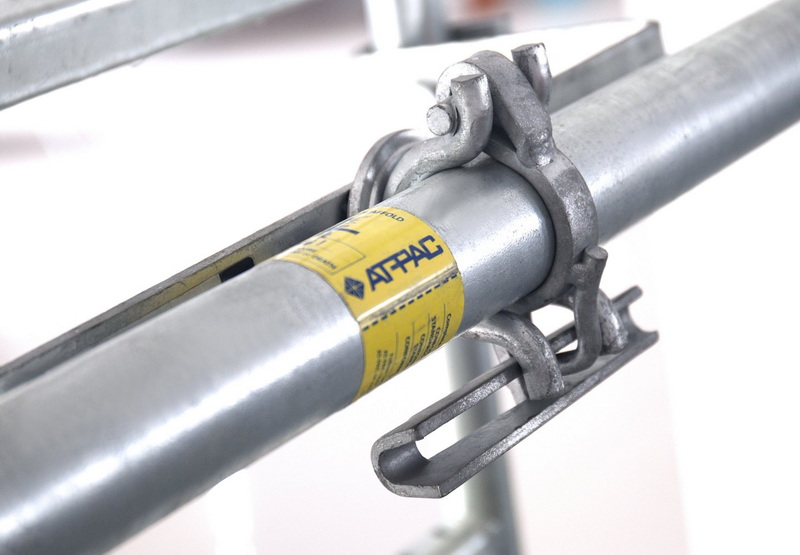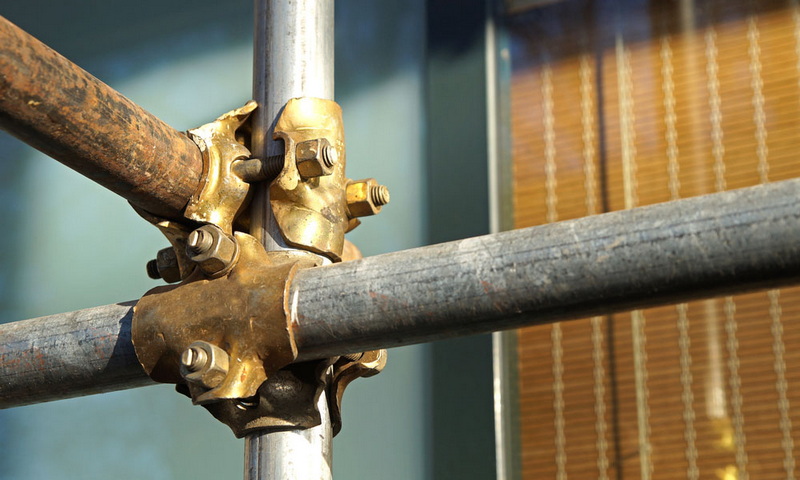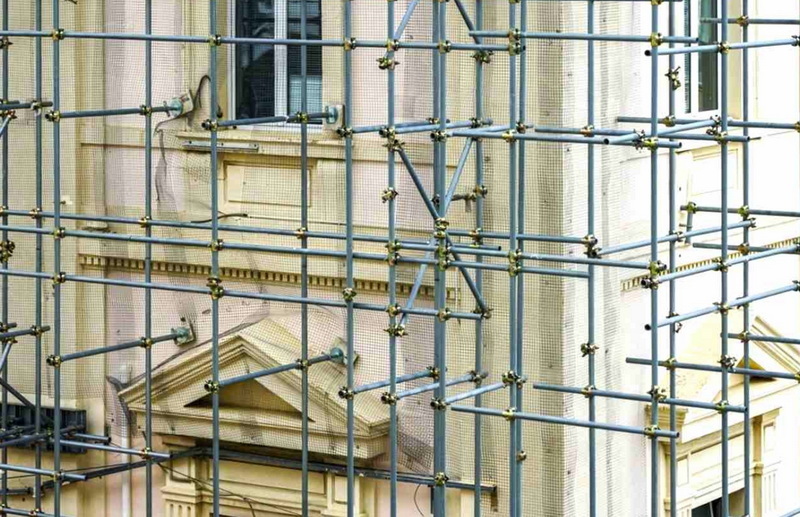Content Menu
● Importance of Pipe Clamps in Scaffolding
● Tools and Materials Needed
● Step-by-Step Installation Guide
>> Step 1: Prepare the Site
>> Step 2: Assemble Vertical Posts
>> Step 3: Install Horizontal Members
>> Step 4: Add Diagonal Bracing
>> Step 5: Install Work Planks
● Safety Considerations
● Comparison with Modular Scaffolding
● Maintenance and Repair
● Environmental Considerations
● Advantages of Tube and Clamp Scaffolding
>> Flexibility and Customization
>> Easy Assembly and Disassembly
>> Safety Features
● Case Studies: Successful Use of Pipe Clamps for Scaffolding
● Training and Certification
● Conclusion
● FAQ
>> 1. What are the main types of pipe clamps used in scaffolding?
>> 2. How often should scaffolding be inspected?
>> 3. What tools are required for tightening pipe clamps?
>> 4. What are the advantages of modular scaffolding over pipe-clamp scaffolding?
>> 5. How should scaffolding be secured to prevent tipping?
● Citations:
Pipe clamps for scaffolding are essential components in construction, providing the structural integrity necessary for safe and efficient work at heights. Proper installation of these clamps is crucial to ensure the stability and safety of the scaffolding system. This article will guide you through the process of installing pipe clamps for scaffolding, highlighting key steps, tools required, and safety considerations.

Importance of Pipe Clamps in Scaffolding
Pipe clamps are used to connect and secure the various components of a scaffolding system, such as tubes and planks. They come in different types, including right-angle clamps and swivel clamps, each serving specific purposes in the scaffolding structure.
Tools and Materials Needed
Before starting the installation, ensure you have the following tools and materials:
- Pipe Clamps: Right-angle and swivel clamps.
- Scaffolding Tubes: Galvanized steel tubes of various lengths.
- Base Plates: For securing the scaffold to the ground.
- Tube and Clamp Wrench: For tightening clamps.
- Measuring Tools: Tape measure, level, and square.
- Safety Equipment: Hard hats, harnesses, and safety nets.
Step-by-Step Installation Guide
Step 1: Prepare the Site
1. Inspect the Site: Ensure the ground is level and firm. If necessary, use leveling tools to adjust the base plates.
2. Position Base Plates: Place base plates at the desired locations, ensuring they are securely fastened to the ground.
Step 2: Assemble Vertical Posts
1. Install Vertical Posts: Place the first vertical post onto a base plate and secure it by twisting and locking the tube into place.
2. Level the Post: Use a level to ensure the post is perfectly vertical.
Step 3: Install Horizontal Members
1. Attach Right-Angle Clamps: Use right-angle clamps to connect horizontal tubes to the vertical posts.
2. Tighten Clamps: Use a tube and clamp wrench to tighten the clamps to 45 foot-pounds.
Step 4: Add Diagonal Bracing
1. Install Diagonal Bracing: Add diagonal tubes to provide additional stability to the scaffold.
2. Secure Bracing: Use right-angle clamps to secure the diagonal tubes.
Step 5: Install Work Planks
1. Lay Work Planks: Place scaffold planks across the horizontal members.
2. Secure Planks: Ensure planks are securely positioned and evenly spaced.
Safety Considerations
- Regular Inspections: Regularly inspect the scaffolding for any damage or wear.
- Proper Training: Ensure all personnel are trained in scaffolding assembly and safety procedures.
- Compliance with Regulations: Adhere to local and national safety standards for scaffolding.
- Use of Safety Nets: Install safety nets around the scaffolding to prevent falls.
Comparison with Modular Scaffolding
Modular scaffolding systems, like SOYUZ, offer quicker assembly times and reduced weight compared to traditional pipe-clamp scaffolding. However, pipe-clamp scaffolding remains versatile and widely used due to its adaptability to complex structures.
Maintenance and Repair
Regular maintenance is crucial to extend the lifespan of scaffolding components. This includes:
- Cleaning: Regularly clean clamps and tubes to prevent corrosion.
- Inspection: Regularly inspect for signs of wear or damage.
- Replacement: Replace any damaged components promptly.

Environmental Considerations
Scaffolding installation should also consider environmental factors such as weather conditions. Ensure that scaffolding is secured against wind and rain, and that all components are resistant to corrosion.
Advantages of Tube and Clamp Scaffolding
Tube and clamp scaffolding offers several advantages, including flexibility, ease of assembly, and safety. It can be customized to fit complex structures and is easy to set up and dismantle, making it ideal for projects where scaffolding needs to be frequently moved or adjusted[9].
Flexibility and Customization
- Adjustable Tubes: Tubes can be cut to different lengths, allowing scaffolding to be tailored to specific project requirements.
- Versatile Clamps: Right-angle and swivel clamps enable scaffolding to be set up in various configurations.
Easy Assembly and Disassembly
- No Welding Required: Tubes connect quickly using clamps, saving time and reducing labor costs.
- Quick Setup: Scaffolding can be rapidly assembled and disassembled, making it efficient for projects with changing requirements.
Safety Features
- Stable Structure: Tightly connected clamps and stable tubes ensure a secure working platform.
- Compliance with Safety Standards: Adheres to OSHA and other safety regulations, ensuring worker safety.
Case Studies: Successful Use of Pipe Clamps for Scaffolding
Pipe clamps for scaffolding have been successfully used in various construction projects worldwide. For instance, in complex building renovations, tube and clamp scaffolding allows for flexible setup around existing structures, ensuring safe access for workers.
Training and Certification
Proper training is essential for the safe and efficient use of pipe clamps for scaffolding. Training programs should cover:
- Scaffolding Assembly: Techniques for assembling and dismantling scaffolding.
- Safety Procedures: Understanding safety regulations and protocols.
- Equipment Handling: Proper use of tools and equipment.
Conclusion
Proper installation of pipe clamps for scaffolding is critical for ensuring the structural integrity and safety of scaffolding systems. By following the steps outlined in this guide and adhering to safety protocols, you can construct scaffolding that meets the demands of various construction projects.

FAQ
1. What are the main types of pipe clamps used in scaffolding?
- Right-Angle Clamps: Used to connect tubes at right angles.
- Swivel Clamps: Used to connect tubes at any angle.
2. How often should scaffolding be inspected?
- Scaffolding should be inspected regularly, ideally before each use, to ensure it remains safe and secure.
3. What tools are required for tightening pipe clamps?
- A tube and clamp wrench is typically used to tighten clamps to the recommended torque of 45 foot-pounds.
4. What are the advantages of modular scaffolding over pipe-clamp scaffolding?
- Modular scaffolding offers faster assembly, reduced weight, and easier installation compared to traditional pipe-clamp systems.
5. How should scaffolding be secured to prevent tipping?
- Scaffolding should be secured with ties or guides to prevent tipping, especially when the height exceeds certain ratios relative to the base dimension.
Citations:
[1] https://www.youtube.com/watch?v=ZM6Tlh_NAnQ
[2] https://www.youtube.com/watch?v=iUqDWjr6uok
[3] https://www.osha.gov/sites/default/files/publications/osha3150.pdf
[4] https://cdn.dal.ca/content/dam/dalhousie/pdf/dept/facilities/FM%20Safety/fallprotection/Safe%20Job%20Procedure%20for%20Erecting%20Tube%20and%20Clamp%20and%20All%20Around%20Scaffolding%20June%202014.pdf
[5] https://www.youtube.com/watch?v=bmV1SlcXqG8
[6] https://brandsafway.com/uploads/files/orn401_bsl_tube_and_clamp_product_brochure.pdf
[7] https://brandsafway.com/uploads/files/orn402_bsl_tube_and_clamp_safety_guidelines.pdf
[8] https://www.shutterstock.com/video/search/scaffolding-clamp
[9] https://www.grinsulating.com/top-benefits-tube-and-clamp-scaffold/






















